George Washington High School
600 32nd Avenue
Foyer
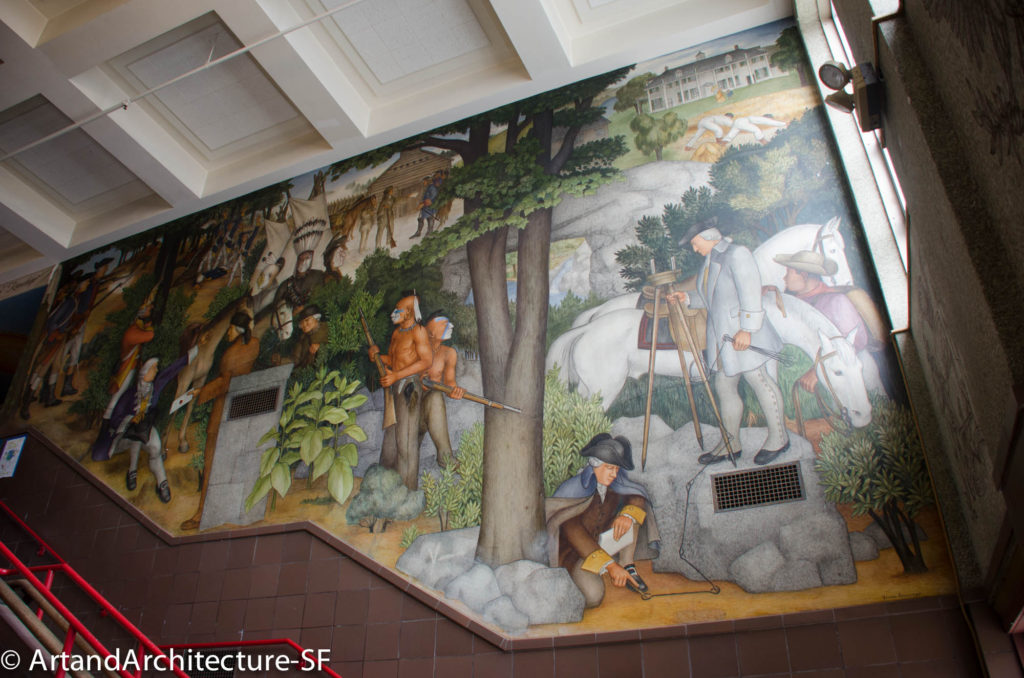
Washington’s early life as a surveyor, military officer in the French and Indian War and master of Mount Vernon
This twelve-panel mural covers all the walls and the stairwell of the entrance to the main lobby of the school. Depicting the life of Washington it covers 1600 square feet. Painted in the “buon” fresco style, which consists of painting with pigments directly onto wet plaster, Arntauff was able to cover about nine feet of wall per eight to twelve-hour day. This largest WPA-funded single-artist mural took ten months to complete.
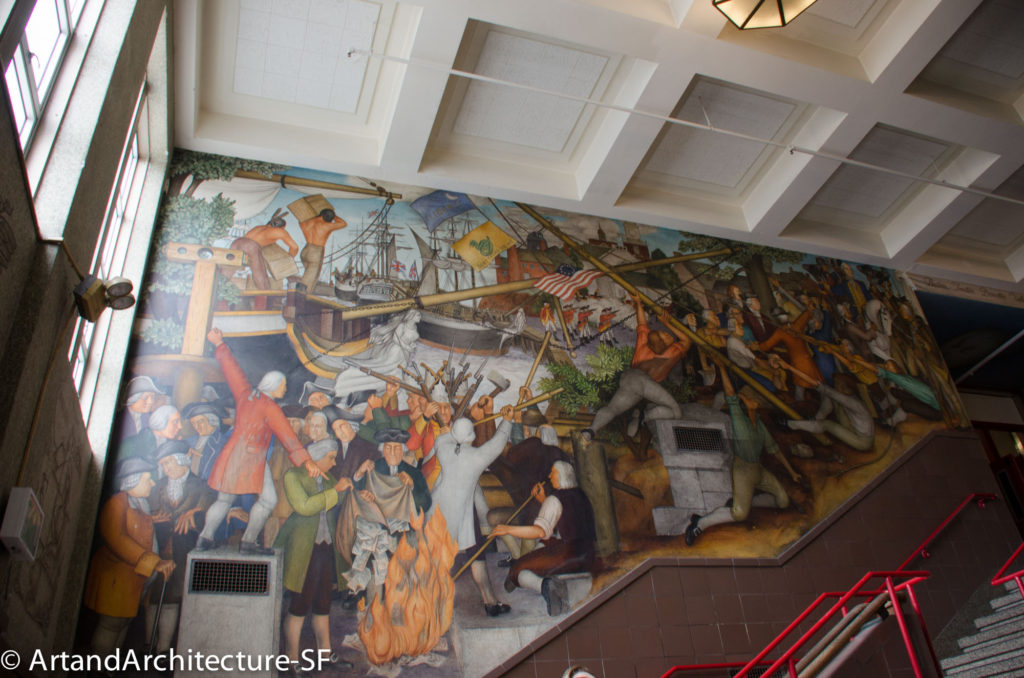
Images of major events leading to the revolution: the Boston Tea Party, the burning of stamps, and the Boston Massacre. In the center, five revolutionaries attempt to raise the “Don’t Tread on Me” flag.

This panel shows the surrender of a Hessian mercenary during the Revolution. Arnautoff researched everything he could about Washington, including the details of uniforms worn during the wars.

Washington as farmer and slave owner titled “Mt. Vernon”.
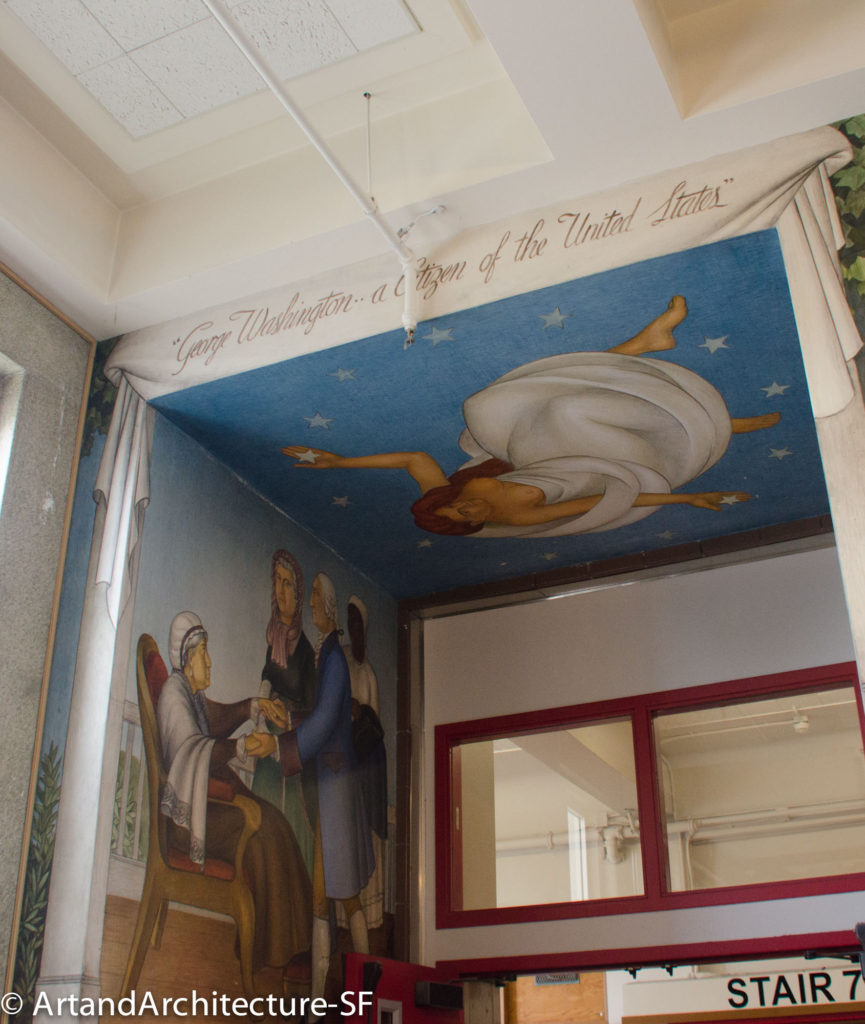
Washington and his aged mother.
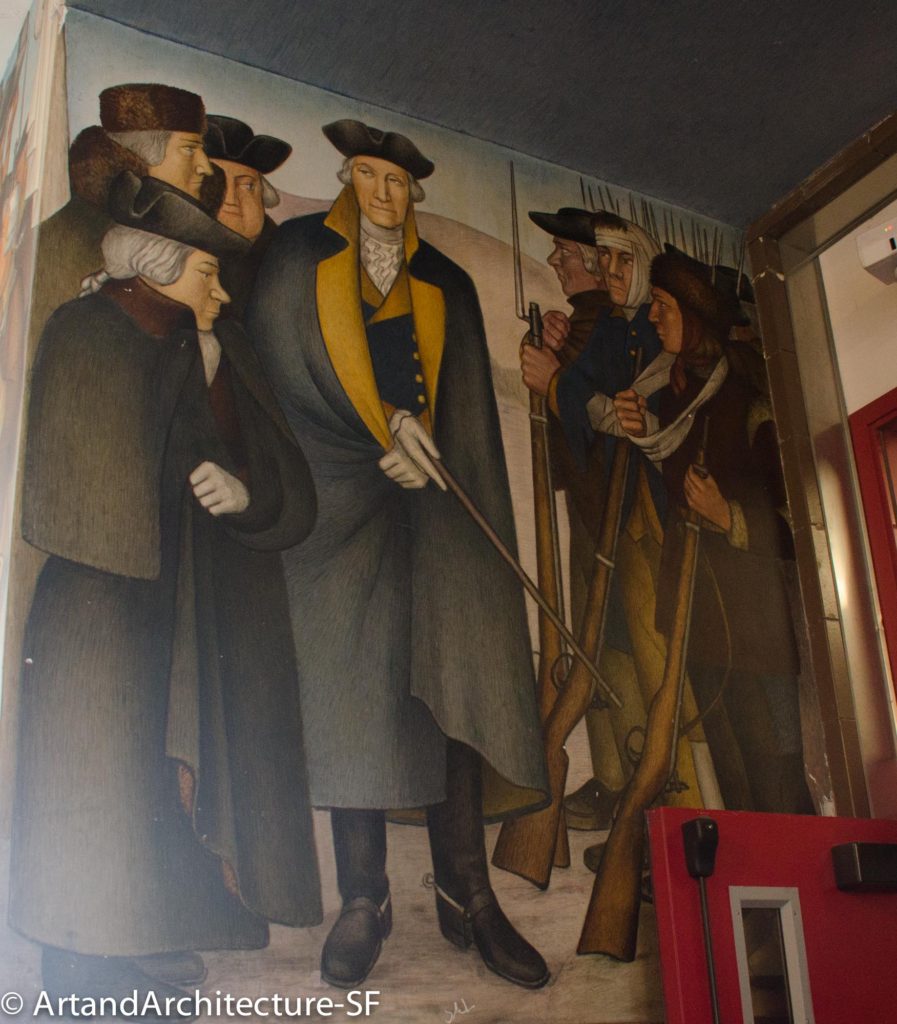
*
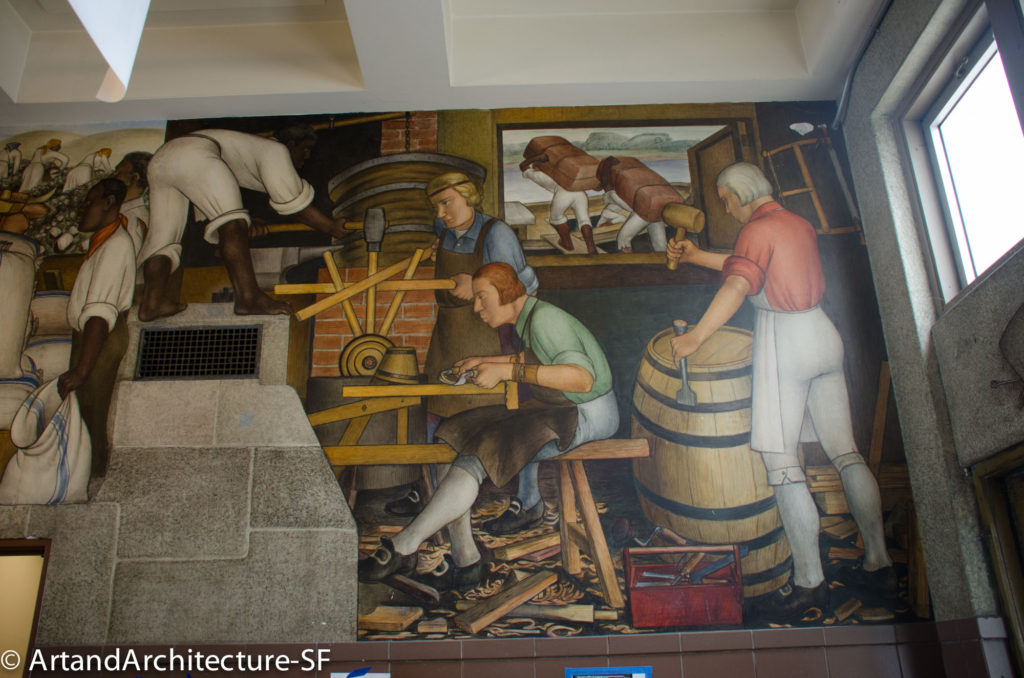
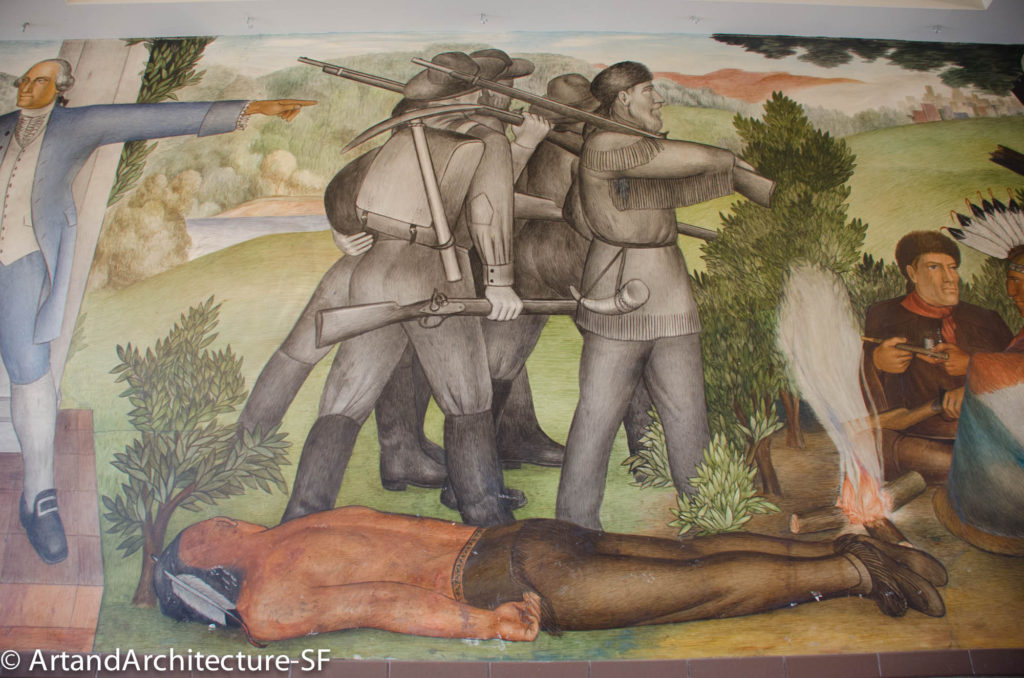
Part of the panel titled “Westward Vision” “He put those ghastly gray pioneers literally walking over the dead body of an Indian to demonstrate that the settlement of the west was an act of conquest that involved the slaughter of Native Americans,” Cherny said at a 2018 Board of Education meeting. “That was a very bold effort on his part to counter the kinds of textbooks that students were seeing.”
This piece of artwork is not without its controversy. Arnautoff was considered a left-wing liberal and communist and many of his works feature themes about class divisions, labor, and undeserved power.
Robert Cherny, a professor emeritus at San Francisco State University who wrote a biography about Victor Arnautoff, believes the artist was presenting “a “counter-narrative” to the prevailing high school textbooks of the time because his representation of the westward expansion included the slaughter of Native Americans, and he presented Washington as a slave owner, both facts the official narrative back then tended to either ignore or gloss over.” SF Richmond Review
In Cherney’s book, he discusses this “Washington dominates five of the six smaller murals, but the centers of the four largest murals are held by Native Americans, working-class revolutionaries, and enslaved African Americans….Arnautoff’s portrayal of Mount Vernon puts Washington near the left margin and places enslaved African Americans at the center, more prominent than several white artisans on the right side of the mural. At the time, high school history classes typically ignored the incongruity that Washington and others among the nation’s founders subscribed to the declaration that “all men are created equal” and yet owned other human beings as chattel.”…Victor Arnautoff and the Politics of Art.
This controversy has risen many times, once in the 1960s when the school countered the problem with new murals in the adjoining hallway by Dewey Crumpler.
The controversy is once again boiling as a result of the process to establish the school as a landmark. The controversy has gone national and covered both in the New York Times and the Wall Street Journal.

Victor Mikhail Arnautoff was born on November 11, 1896, in Uspenivka, Taurida Governorate which at the time was part of the Russian Empire. Arnautoff was a Russian-American painter and professor of art. He worked in San Francisco and the Bay Area from 1925 to 1963, including two decades as a teacher at Stanford University, and was particularly prolific as a muralist during the 1930s. He became a naturalized U.S. citizen, but returned to the Soviet Union after the death of his wife, continuing his career there before his death in Leningrad on March 22, 1979.
Work in the San Francisco Bay Area by Arnautoff includes: work at the Palo Alto Medical Clinic where he had been a patient. The unveiling caused a traffic jam and controversy because the mural showed a doctor examining a female patient whose unclothed breasts were at eye-level. San Francisco City Life in Coit Tower, a mural at the Presidio Chapel and the California School of Fine Arts Library.